ActiveOutdoors10 things to see in the night sky in 2024 (and how to see them)From meteor showers to a landmark solar eclipse, the next 12 months will bring some stunning sights for skywatchersWhen you purchase through links on our site, we may earn an affiliate commission.Here’s how it works.
ActiveOutdoors10 things to see in the night sky in 2024 (and how to see them)From meteor showers to a landmark solar eclipse, the next 12 months will bring some stunning sights for skywatchersWhen you purchase through links on our site, we may earn an affiliate commission.Here’s how it works.
From meteor showers to a landmark solar eclipse, the next 12 months will bring some stunning sights for skywatchers
When you purchase through links on our site, we may earn an affiliate commission.Here’s how it works.
(Image credit: Getty Images)
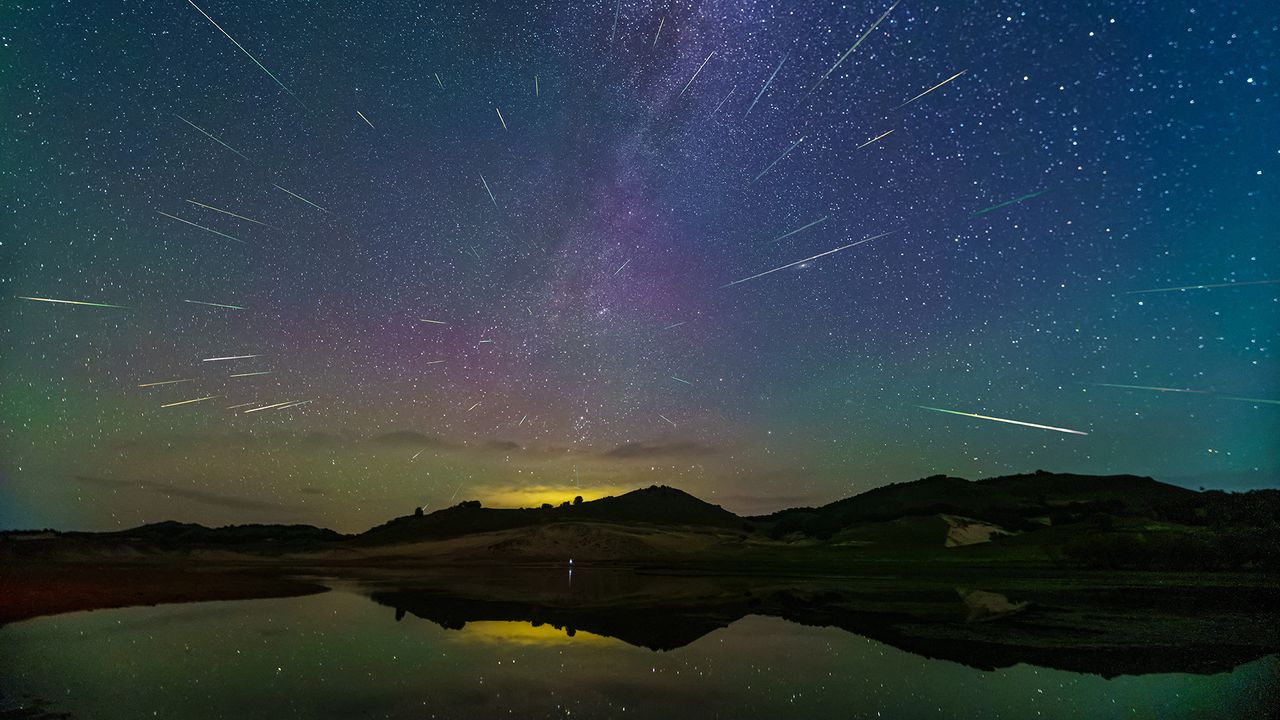
(Image credit: Getty Images)
With a celestial schedule of events that astronomy enthusiasts won’t want to miss, the sky in 2024 promises to be spectacular. From a total solar eclipse to bright comets and breathtaking planetary alignments, here are 10 astronomical events to mark in your calendar – most visible without using thebest telescopes!
1. Quadrantid meteor shower
The first of three meteor showers that will take place in dark, moonless skies during the forthcoming year, the Quadrantids, will peak on the night of January 3/4, 2024. As many as 60 ‘shooting stars’ per hour will be best seen using just your naked eyes, and they can appear anywhere in the night sky. All you need are clear skies and one of thebest winter coats– binoculars and telescopes will make the ‘shooting stars’ harder to see.
2. A bright comet
There’s nothing more likely to catch the imagination than a comet visible at night. Two comets could brighten for us Earthlings in the next 12 months, withComet Pons-Brookslikely to be visible in March/April 2024 andComet Tsuchinshan-ATLASbrightening in October 2024. It is hoped that both will be visible to the naked eye, but whatever happens, a small telescope will get you a great view. Here’show to choose your first telescope.
(Image credit: Getty Images)

(Image credit: Getty Images)
3. Total eclipse of the sun
Although it’s not technically a night sky sight, an eclipse of the sun is high on the list of all space fans. On 8 April 2024, the moon will completely block the sun as seen only from a 115-mile-wide path of totality that will stretch across North America from Mexico to Canada via the U.S.
Over 32 million people will witness a brief totality when day turns to night, making it possible to glimpse – with naked eyes – the sun’s spectacular and spiky outer atmosphere, the corona. Any pair of thebest binocularswill afford great views of totality, though you’ll need something like theLunt SUNocular 8x32 solar bincoularsfor safely viewing the partial phases.
4. Crescent moon and planets
Look west after sunset on 10 April 2024, and you’ll see a slender 7%-lit crescent moon. That’s a beautiful sight with naked eyes, binoculars or a telescope, but tonight, there’s a bonus with Jupiter shining to the lower left. If you have a telescope, this is an ideal opportunity to observe Jupiter and also find the greenish planet Uranus, which will be just above it. Here are thebest telescopes for beginnersandhow to choose and use binoculars for stargazing and astronomy.
5. Eta Aquariid meteor shower
Sign up to the T3 newsletter for smarter living straight to your inbox
Get all the latest news, reviews, deals and buying guides on gorgeous tech, home and active products from the T3 experts
6. Perseid meteor shower
The most famous and the best meteor shower will occur in ideal sky conditions overnight on August 12/13, 2024. As many as 100 shooting stars will be seen during the peak hours and can appear anywhere in the night sky. Hope for clear skies and use only your naked eyes.
7. Mars and Jupiter shine together
(Image credit: Getty Images)
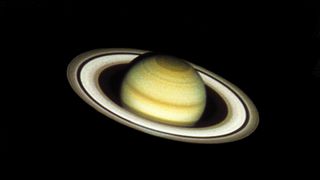
(Image credit: Getty Images)
8. Saturn’s rings at their best
Since Earth’s journey around the sun is much shorter than those of the outer planets, it gets between each one and the sun each year. Astronomers call it ‘opposition’. On 8 September 2024, the sun’s full glare will shine on Saturn from Earth’s point of view, making it brighter and 100% visible. It’s also the closest Earth gets to Saturn, which takes 29 years to complete one orbit. You’ll need a small telescope to see Saturn’s rings. Learn about the threedifferent types of telescopesavailable.
9. Two supermoons in a row
A supermoon is a full moon that occurs near the moon’s closest approach to Earth. Something that happens two or three times a year. There will be supermoons on 18 September 2024 (Harvest Moon) and 17 October 2024 (Hunter’s Moon).
10. Jupiter at its best
The giant planet’s opposition will happen on 6 December 2024, making that date – and the few weeks on either side – the best time to see it at its biggest, brightest and best. Any pair of binoculars will give you a view of its four giant moons (Ganymede, Callisto, Europa and Io), while any small telescope will afford views of its pinkish cloud bands and its Great Red Spot storm.
Today’s best Telescopes dealsCelestron 114 LCM telescope$11.99ViewSee all pricesSVBONY Ultra High Contrast Filter$28.99$24.99ViewSee all pricesCelestron Omni Plossl Eyepieces$27.95ViewSee all pricesEducational Insights GeoSafari Jr. My$27.99ViewSee all pricesSVBONY Telescope Light Pollution$29.99ViewSee all pricesMy First Telescope$28.71ViewSee all pricesNASA Lunar Telescope for Kids$44.99ViewSee all pricesCelestron PowerSeeker 50 AZ Refractor$63.95ViewSee all pricesCelestron 76mm Firstscope Apollo 11$71.95ViewSee all pricesCelestron Travel Scope 70$79.89ViewSee all pricesWe check over 250 million products every day for the best prices
Today’s best Telescopes dealsCelestron 114 LCM telescope$11.99ViewSee all pricesSVBONY Ultra High Contrast Filter$28.99$24.99ViewSee all pricesCelestron Omni Plossl Eyepieces$27.95ViewSee all pricesEducational Insights GeoSafari Jr. My$27.99ViewSee all pricesSVBONY Telescope Light Pollution$29.99ViewSee all pricesMy First Telescope$28.71ViewSee all pricesNASA Lunar Telescope for Kids$44.99ViewSee all pricesCelestron PowerSeeker 50 AZ Refractor$63.95ViewSee all pricesCelestron 76mm Firstscope Apollo 11$71.95ViewSee all pricesCelestron Travel Scope 70$79.89ViewSee all pricesWe check over 250 million products every day for the best prices
Today’s best Telescopes dealsCelestron 114 LCM telescope$11.99ViewSee all pricesSVBONY Ultra High Contrast Filter$28.99$24.99ViewSee all pricesCelestron Omni Plossl Eyepieces$27.95ViewSee all pricesEducational Insights GeoSafari Jr. My$27.99ViewSee all pricesSVBONY Telescope Light Pollution$29.99ViewSee all pricesMy First Telescope$28.71ViewSee all pricesNASA Lunar Telescope for Kids$44.99ViewSee all pricesCelestron PowerSeeker 50 AZ Refractor$63.95ViewSee all pricesCelestron 76mm Firstscope Apollo 11$71.95ViewSee all pricesCelestron Travel Scope 70$79.89ViewSee all pricesWe check over 250 million products every day for the best prices
Today’s best Telescopes deals
Celestron 114 LCM telescope$11.99ViewSee all pricesSVBONY Ultra High Contrast Filter$28.99$24.99ViewSee all pricesCelestron Omni Plossl Eyepieces$27.95ViewSee all pricesEducational Insights GeoSafari Jr. My$27.99ViewSee all pricesSVBONY Telescope Light Pollution$29.99ViewSee all pricesMy First Telescope$28.71ViewSee all pricesNASA Lunar Telescope for Kids$44.99ViewSee all pricesCelestron PowerSeeker 50 AZ Refractor$63.95ViewSee all pricesCelestron 76mm Firstscope Apollo 11$71.95ViewSee all pricesCelestron Travel Scope 70$79.89ViewSee all prices
Celestron 114 LCM telescope$11.99ViewSee all prices
Celestron 114 LCM telescope$11.99ViewSee all prices

Celestron 114 LCM telescope
Celestron 114 LCM telescope

$11.99View
$11.99
$11.99
See all prices
SVBONY Ultra High Contrast Filter$28.99$24.99ViewSee all prices
SVBONY Ultra High Contrast Filter$28.99$24.99ViewSee all prices

SVBONY Ultra High Contrast Filter
SVBONY Ultra High Contrast Filter

$28.99$24.99View
$28.99$24.99
$24.99
See all prices
Celestron Omni Plossl Eyepieces$27.95ViewSee all prices
Celestron Omni Plossl Eyepieces$27.95ViewSee all prices

Celestron Omni Plossl Eyepieces
Celestron Omni Plossl Eyepieces

$27.95View
$27.95
$27.95
See all prices
Educational Insights GeoSafari Jr. My$27.99ViewSee all prices
Educational Insights GeoSafari Jr. My$27.99ViewSee all prices

Educational Insights GeoSafari Jr. My
Educational Insights GeoSafari Jr. My

$27.99View
$27.99
$27.99
See all prices
SVBONY Telescope Light Pollution$29.99ViewSee all prices
SVBONY Telescope Light Pollution$29.99ViewSee all prices

SVBONY Telescope Light Pollution
SVBONY Telescope Light Pollution

$29.99View
$29.99
$29.99
See all prices
My First Telescope$28.71ViewSee all prices
My First Telescope$28.71ViewSee all prices

My First Telescope
My First Telescope

$28.71View
$28.71
$28.71
See all prices
NASA Lunar Telescope for Kids$44.99ViewSee all prices
NASA Lunar Telescope for Kids$44.99ViewSee all prices

NASA Lunar Telescope for Kids
NASA Lunar Telescope for Kids

$44.99View
$44.99
$44.99
See all prices
Celestron PowerSeeker 50 AZ Refractor$63.95ViewSee all prices
Celestron PowerSeeker 50 AZ Refractor$63.95ViewSee all prices

Celestron PowerSeeker 50 AZ Refractor
Celestron PowerSeeker 50 AZ Refractor

$63.95View
$63.95
$63.95
See all prices
Celestron 76mm Firstscope Apollo 11$71.95ViewSee all prices
Celestron 76mm Firstscope Apollo 11$71.95ViewSee all prices

Celestron 76mm Firstscope Apollo 11
Celestron 76mm Firstscope Apollo 11

$71.95View
$71.95
$71.95
See all prices
Celestron Travel Scope 70$79.89ViewSee all prices
Celestron Travel Scope 70$79.89ViewSee all prices

Celestron Travel Scope 70
Celestron Travel Scope 70

$79.89View
$79.89
$79.89
See all prices
We check over 250 million products every day for the best prices
We check over 250 million products every day for the best prices

Sky Stream gets a great new trick that unlocks long hidden potentialA Sky Stream puck update gives you a host of new channels
A Sky Stream puck update gives you a host of new channels

If you ever needed proof that cassette players are back, this is itWe Are Rewind has made a portable tape deck so retro it should appear from nowhere in a DeLorean
We Are Rewind has made a portable tape deck so retro it should appear from nowhere in a DeLorean

Swarovski AX Visio smart binoculars will tell you what birds you’re looking atA neural processor is capable of identifying over 9,000 types of bird or animal
A neural processor is capable of identifying over 9,000 types of bird or animal
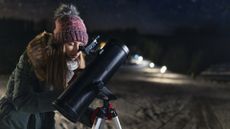
Got a new telescope for Christmas? Try spotting these 10 celestial objects with itFrom star clusters and nebula to planets and a well-timed ‘Christmas Moon,’ there’s plenty to look at in a telescope this festive season
From star clusters and nebula to planets and a well-timed ‘Christmas Moon,’ there’s plenty to look at in a telescope this festive season

What’s the ‘Christmas Star’ and how to observe it this DecemberHere’s what the bright star in the east after dark is and why it has appeared just in time for the holidays
Here’s what the bright star in the east after dark is and why it has appeared just in time for the holidays

When is the best time for birdwatching?No matter what the season, it’s always a good time to start twitching
No matter what the season, it’s always a good time to start twitching
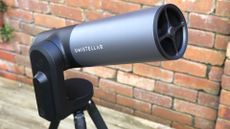
Unistellar eQuinox II review: Brilliant smartphone-controlled telescopeNo eyepiece, no complicated set-up, just great images sent straight to your smartphone
No eyepiece, no complicated set-up, just great images sent straight to your smartphone
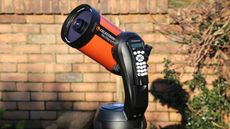
Celestron NexStar 6SE review: spy on the galaxyExquisitely sharp views of the deep sky make the Celestron NexStar 6SE an impressive all-rounder for serious astronomy
Exquisitely sharp views of the deep sky make the Celestron NexStar 6SE an impressive all-rounder for serious astronomy
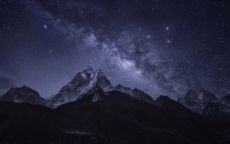
Stars are disappearing from our night skyNew study reveals light pollution is growing almost 10% per year, drastically reducing how many stars we can see with the naked eye
New study reveals light pollution is growing almost 10% per year, drastically reducing how many stars we can see with the naked eye
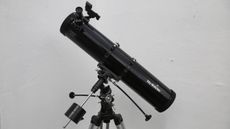
Sky-Watcher Explorer 130 EQ2: a clever equatorial mount makes this a standout telescope for amateur astronomers looking for something more advancedArmed with plenty of aperture and an equatorial mount, the Sky-Watcher Explorer 130 EQ2 is a good step-up telescope for general observing
Armed with plenty of aperture and an equatorial mount, the Sky-Watcher Explorer 130 EQ2 is a good step-up telescope for general observing